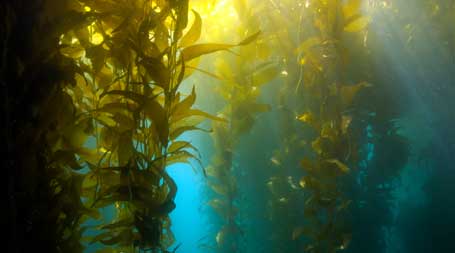
Kelps are large habitat-forming seaweeds that are critical to ecosystem services derived from temperate coasts. Global climate change is a threat to kelp beds because kelps are sensitive to elevated temperature, reduced nutrient concentrations and shifts in herbivore abundances—all documented consequences of climate driven warming, changes to oceanographic circulation and upwelling, and range extensions. Minimising the socio-economic costs of human adaptation to potential impacts of declining kelp beds (e.g. severely compromised fisheries resources as seen in south-eastern Australia) requires knowledge of the ability of kelps to maintain physiological performance and ecological function in different climates (i.e. their capacity for biological adaptation). So far, however, this knowledge has been severely limited by the difficulties of testing effects of ‘climate’ on such large organisms across relevant spatial and temporal scales. This project will start to redress this limitation by using identical comparative experiments to construct a global benchmark of kelp responses to gradients in latitude-climate. Specifically, this project will bring together leading seaweed scientists, and their research students, to work on global patterns of physiological and ecological responses of kelps to environmental variation along latitudinal gradients. There will be two distinct components:
- A workshop to synthesise global patterns of physiological and ecological performance of kelps against climates and latitudes. This will result in a gap analysis of research needs, a common conceptual framework and an active global network of researchers.
- A joint research project testing physiological (temperature dependency of respiration and photosynthesis) and ecological (growth and reproduction) performance of kelp populations separated by 2-4° latitude on each continent, using standardised methods for as many kelp species as possible (n>6). This will document and cement the collaborations, and provide familiarity with inter-institutional environments and processes.
